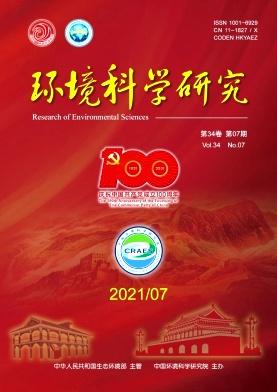{"title":"Microbial Aerosol Investigation and Health Risk Assessment of Residential Area in Wuhan City","authors":"Y. Xia, X. Sun, R. Tao, M. Zhang, M. Zheng, Y. Mei","doi":"10.13198/j.issn.1001-6929.2021.05.24","DOIUrl":null,"url":null,"abstract":"In order to investigate the distribution and risk of microbial aerosols in residential areas after the COVID-19 in Wuhan Ctiy, Changqing Garden residential area, a mature community was selected as a case in this study. From October to December 2020, the Andersen-sixstage microbial air sampler was used to collect samples in six typical places in this residential area, and the microbial aerosol concentration was determined by the plate count method. In addition, the health risk assessment was evaluated according to the Chinese Population Exposure Parameters Manual (Adult Volume). The results showed that: (1) The concentration of microbial aerosol can be ranked in this order: fresh food market >underground parking lot >food street >central basketball court >central square >green pavilion. (2) The concentration of bacteria and fungus aerosol was different in different places, and the maximum aerosol concentration occurred in the fresh food market ((1525.32±1311.31) CFU/m3) and the food street ((1296.82±113.84) CFU/m3), respectively. (3) Take the air microbial concentration in typical places as the evaluation standard: the central basketball court, green pavilion and central square were clean, the fresh food market and underground parking lot were slightly polluted, and the food court was lightly pollution. (4) The median diameter of microbial aerosols was less than 4.7 μm, which can easily cause lower respiratory tract infections in residents. (5) The Hazard Quotient (HQ) of the typical places from October to December 2020 was less than 1, indicating that the health risk of microbial aerosol exposure in Changqing Garden residential area was relatively small. This research shows that the air quality of the Changqing Garden residential area is good under the epidemic prevention and control normalized measures, which meets the requirements for sanitary conditions in the post-COVID-19 era. © 2021, Editorial Board, Research of Environmental Sciences. All right reserved.","PeriodicalId":21108,"journal":{"name":"环境科学研究","volume":"34 1","pages":"2509-2516"},"PeriodicalIF":0.0000,"publicationDate":"2021-01-01","publicationTypes":"Journal Article","fieldsOfStudy":null,"isOpenAccess":false,"openAccessPdf":"","citationCount":"0","resultStr":null,"platform":"Semanticscholar","paperid":null,"PeriodicalName":"环境科学研究","FirstCategoryId":"1087","ListUrlMain":"https://doi.org/10.13198/j.issn.1001-6929.2021.05.24","RegionNum":0,"RegionCategory":null,"ArticlePicture":[],"TitleCN":null,"AbstractTextCN":null,"PMCID":null,"EPubDate":"","PubModel":"","JCR":"Q2","JCRName":"Environmental Science","Score":null,"Total":0}
引用次数: 0


